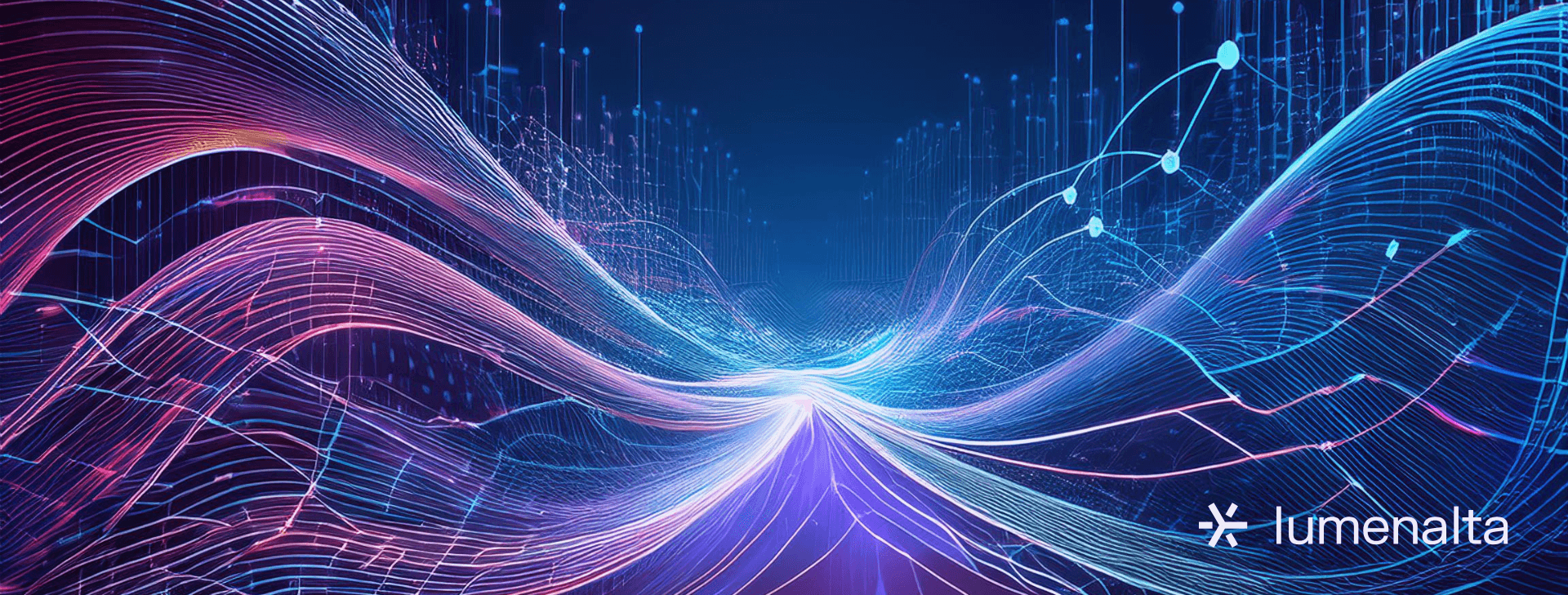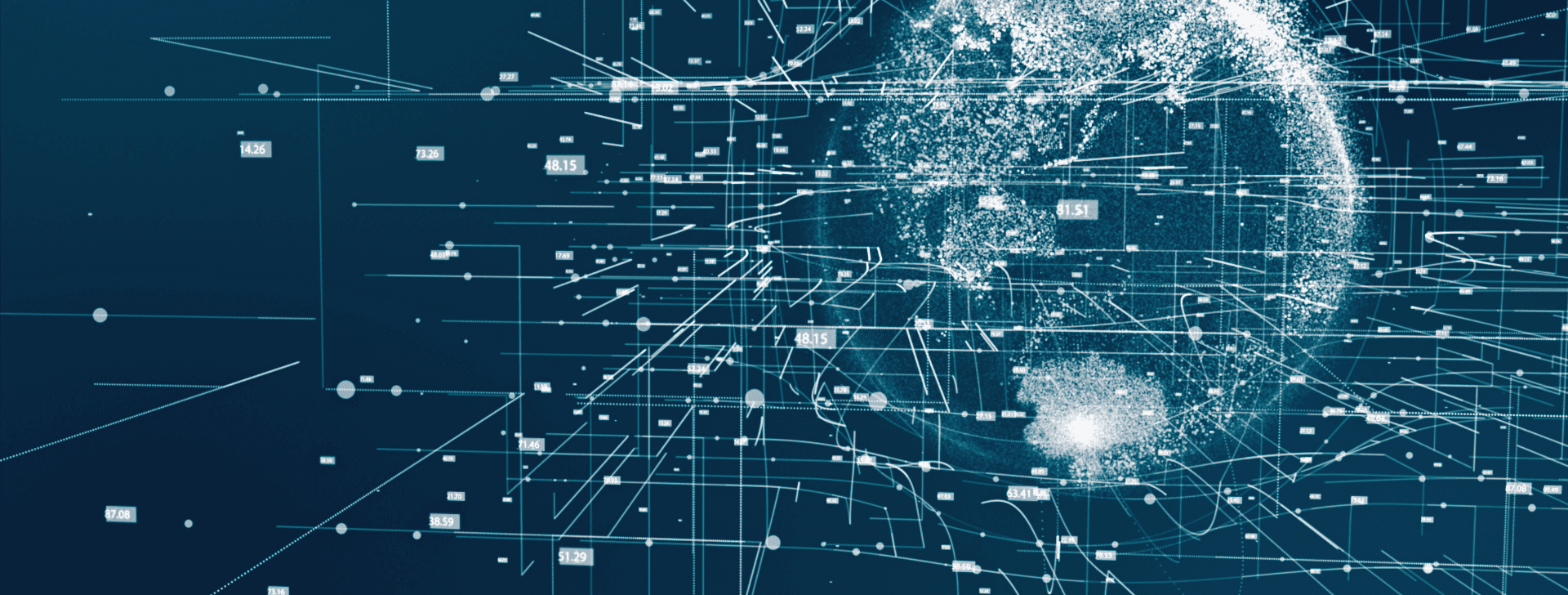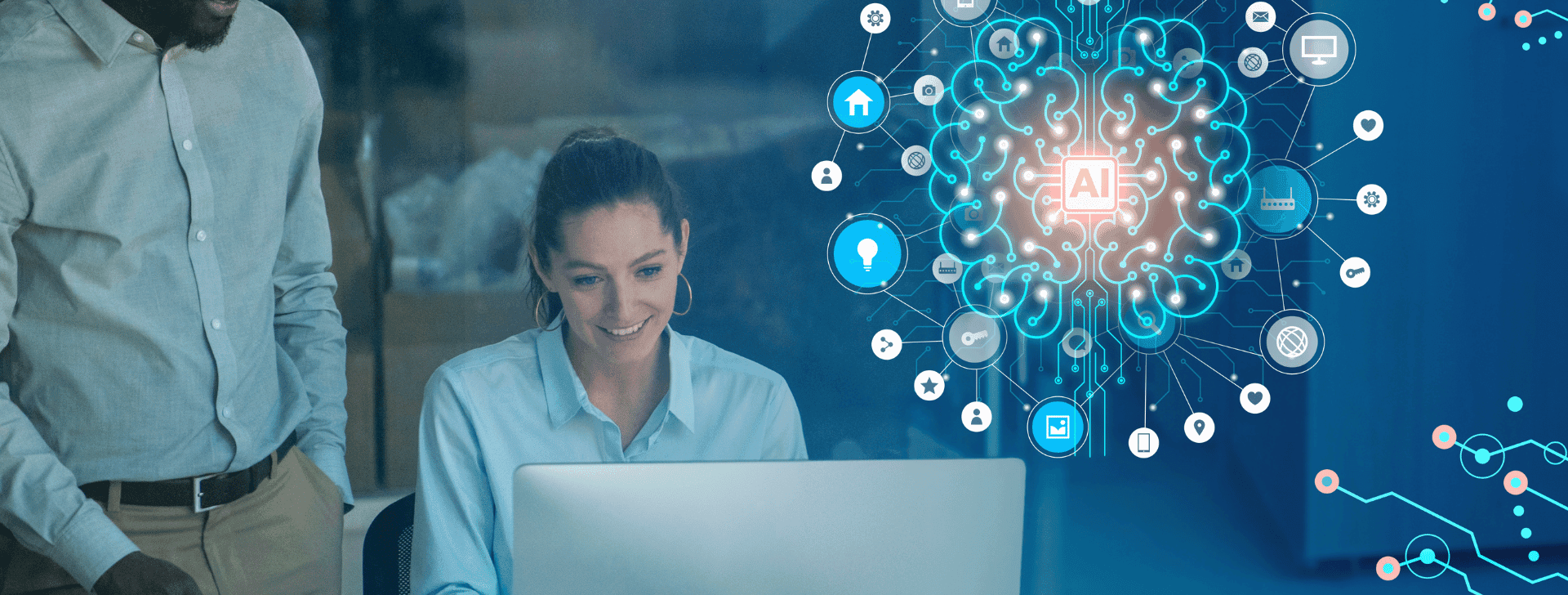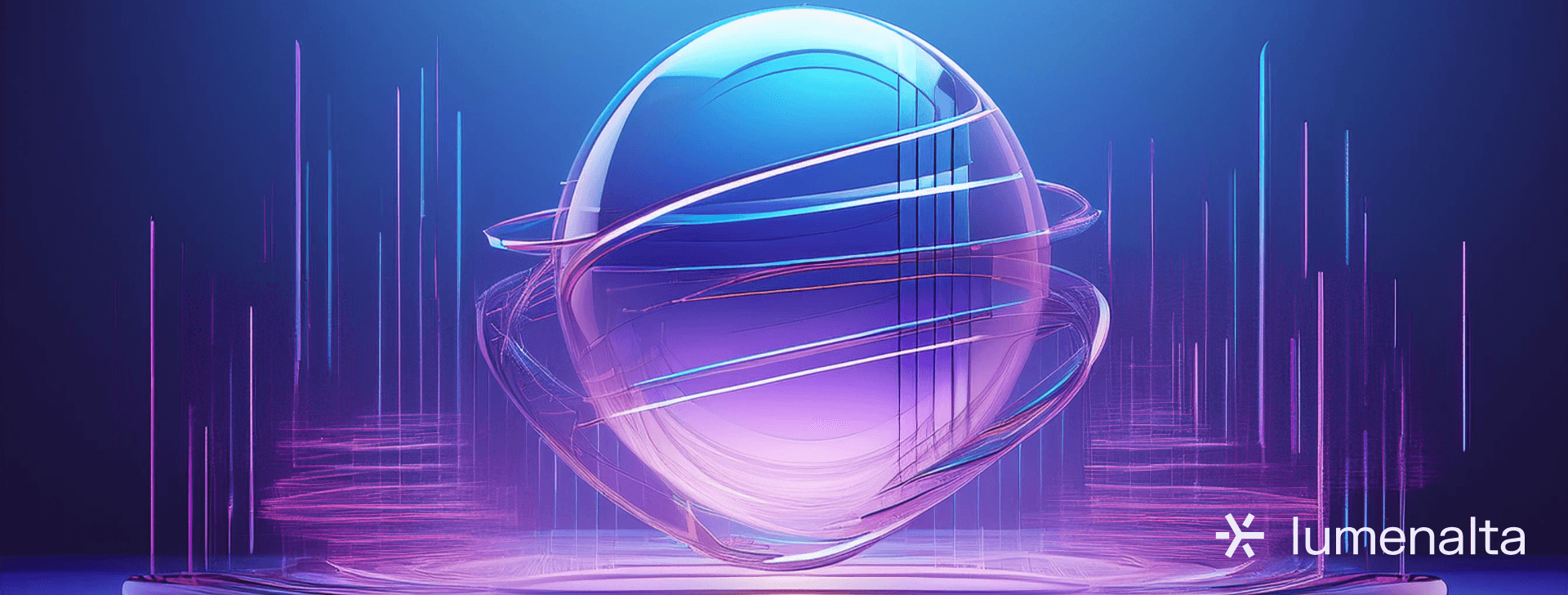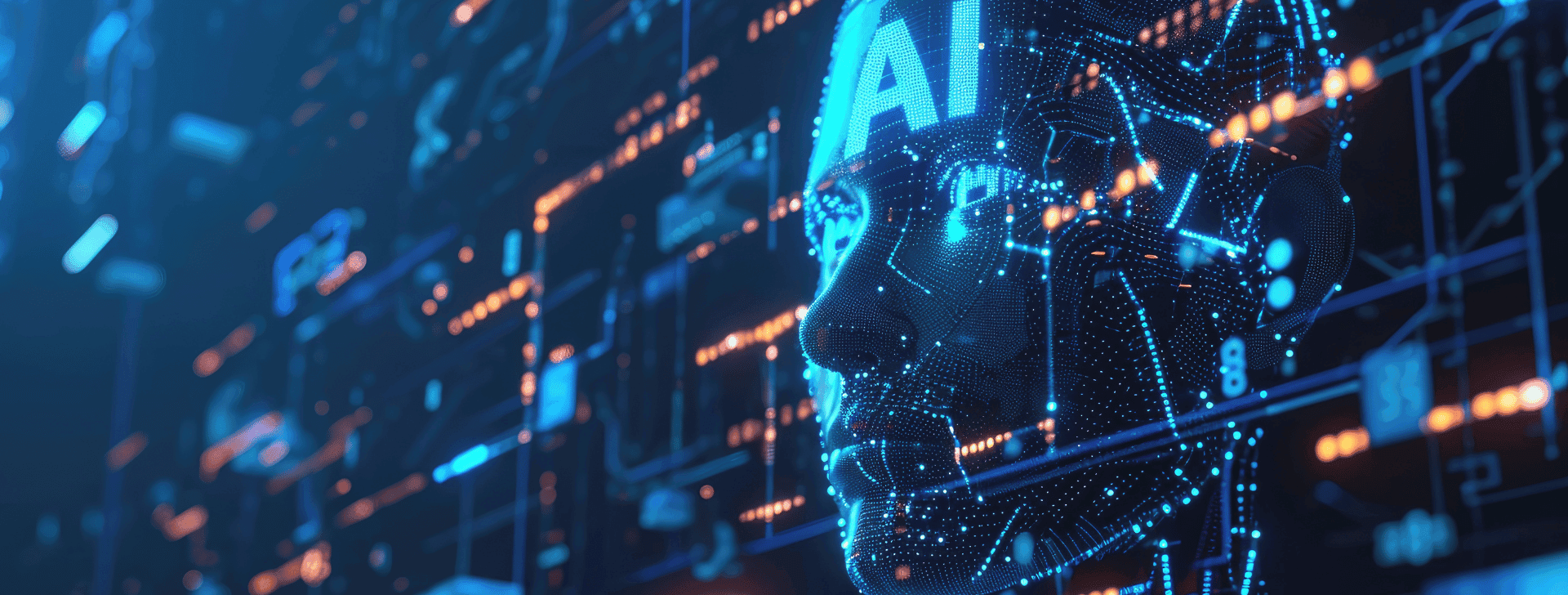

How generative AI is transforming the construction industry
NOV. 14, 2024
7 Min Read
Generative AI is revolutionizing the construction industry, bringing a level of precision, efficiency, and sustainability that was previously unimaginable.
This advanced technology enables architects and engineers to create optimized designs, reduce material waste, and significantly improve project timelines, offering unprecedented value for stakeholders. Generative AI's ability to simulate multiple design iterations in seconds is setting a new standard for innovation in construction.
Beyond design, generative AI is enhancing safety and resource allocation on construction sites. AI-driven tools predict potential hazards, streamline scheduling, and optimize the deployment of manpower and equipment, minimizing project delays and increasing overall efficiency. By integrating data from various sources, these tools enable decision-makers to tackle challenges with confidence and agility.
The future of generative AI in construction is just as exciting. From incorporating digital twins to powering smart, sustainable buildings, this technology is poised to reshape the industry's landscape. Companies embracing these capabilities today are not only gaining a driving edge but are also driving the shift toward greener, smarter, and more efficient construction practices.
Key takeaways
- 1. Generative AI creates optimized construction designs, improving material efficiency, sustainability, and cost-effectiveness.
- 2. AI-powered scheduling tools enhance timeline accuracy by predicting and mitigating potential delays.
- 3. Advanced risk management platforms simulate potential hazards, enabling proactive safety and efficiency strategies.
- 4. Resource allocation tools powered by AI minimize waste while maximizing manpower and material utilization.
- 5. Generative AI’s future impact includes integrating digital twins and smart buildings to drive long-term innovation.
Understanding generative AI in construction
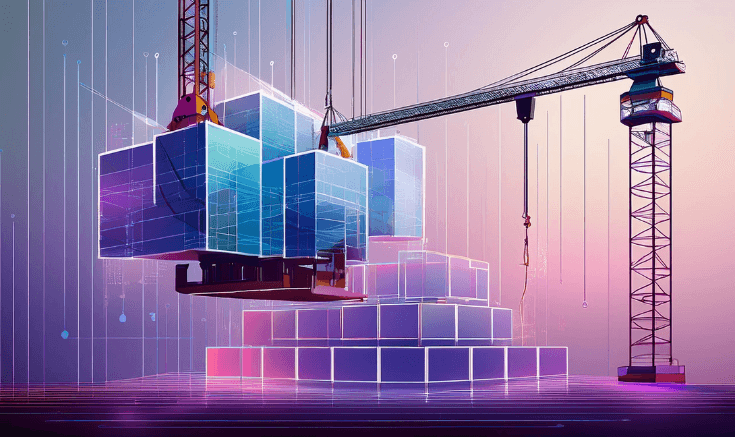
Generative artificial intelligence (AI) is fundamentally reshaping the construction industry, offering capabilities that enhance efficiency, optimize resources, and drive smarter decision-making. Generative AI refers to a category of AI models that produce new, original content, whether it's design schematics, construction plans, or optimized schedules. For construction, this means integrating AI into traditional workflows to streamline operations and deliver innovative solutions.
Unlike conventional AI, which focuses on predictive analytics or classification tasks, generative AI creates solutions by simulating multiple scenarios and offering outcomes optimized for efficiency, cost, or sustainability. This innovation is particularly transformative in a sector like construction, where projects are highly dynamic, involving multiple stakeholders, tight timelines, and complex logistical challenges.
The adoption of generative AI in construction is more than just a trend; it's a strategic necessity. By utilizing AI to address common pain points, including design inefficiencies, supply chain bottlenecks, and onsite delays, businesses are not only enhancing productivity but also positioning themselves as industry leaders in innovation and sustainability.
Types of GenAI solutions for the construction industry

Generative AI is transforming the construction industry by offering specialized solutions that address key operational challenges, improve efficiency, and foster innovation. These tools allow construction firms to optimize resources, streamline processes, and enhance decision-making at every stage of a project. With a focus on designing smarter workflows, generative AI provides the construction sector with advanced capabilities tailored to its complex and demanding nature.
Generative AI solutions span various aspects of construction, from design and planning to execution and risk management. By integrating these tools, construction companies can achieve significant benefits, such as reduced project timelines, cost savings, and improved safety. Below are some of the most impactful generative AI applications in construction:
- Design optimization tools: Generative AI platforms automate the creation of building designs, enabling architects and engineers to explore multiple iterations quickly. These tools consider factors such as material efficiency, structural integrity, and environmental sustainability.
- Scheduling software: AI-powered scheduling solutions analyze historical data and real-time factors, such as weather conditions and material availability, to create precise and adaptable project timelines.
- Resource allocation systems: These tools efficiently distribute manpower, equipment, and materials, ensuring that resources are utilized optimally while minimizing waste.
- Risk management platforms: Generative AI assesses potential risks by simulating construction scenarios, identifying safety hazards, and predicting bottlenecks. This allows for proactive mitigation strategies.
- Procurement tools: AI optimizes procurement by analyzing supplier performance, logistics, and pricing data to ensure the timely and cost-effective delivery of materials.
- Digital twin technology: AI-enabled digital twins replicate construction environments, providing real-time insights into project progress and enabling data-driven decision-making.
These generative AI solutions enable construction firms to address inefficiencies, improve collaboration among stakeholders, and ensure better outcomes. Whether optimizing designs, managing risks, or enhancing scheduling accuracy, these technologies are vital for companies aiming to stay competitive.
Adopting generative AI solutions allows construction firms to move beyond traditional methods and embrace a more data-centric, innovative approach. These tools are not just about solving immediate challenges but also about fostering a culture of continuous improvement. As the industry evolves, integrating generative AI into core processes will be critical for driving long-term success and positioning businesses as leaders in modern construction practices.
Benefits of implementing GenAI in construction projects

Integrating generative AI into construction projects provides significant advantages, addressing longstanding inefficiencies and driving better outcomes. These benefits extend across every phase of construction, from planning and design to execution and post-project analysis. By embedding generative AI into workflows, construction firms can unlock efficiencies, reduce costs, and enhance the overall quality of their projects.
- Enhanced design accuracy: Generative AI improves the precision of construction designs by analyzing complex variables and creating optimized solutions tailored to project goals.
- Improved cost management: AI tools provide detailed cost estimations, helping teams identify areas for savings while maintaining quality standards.
- Increased productivity: By automating repetitive tasks, generative AI allows construction teams to focus on higher-value activities, streamlining operations and improving efficiency.
- Optimized resource utilization: Generative AI ensures better allocation of resources like manpower, equipment, and materials, minimizing waste and maximizing value.
- Proactive risk mitigation: Advanced AI platforms simulate potential risks, enabling teams to implement preemptive safety measures and reduce project delays.
- Sustainability gains: AI solutions prioritize eco-friendly practices, such as reducing material waste and optimizing energy efficiency in building designs.
These benefits are not only operational but also strategic, positioning construction companies to meet modern demands for efficiency and sustainability. Generative AI is an enabler of aggressive advantage, allowing firms to deliver projects faster, at lower costs, and with higher quality.
By embracing generative AI, construction firms gain the tools needed to navigate the complexities of modern projects effectively. These benefits are foundational for the industry’s evolution, making generative AI a vital component of any construction firm’s strategy for success.
“Generative AI enables architects and engineers to explore multiple design iterations quickly, leading to cost-effective and sustainable choices.”
Best practices for integrating GenAI in construction workflows
Successfully incorporating generative AI into construction workflows requires a structured approach to ensure seamless integration and maximum impact. From planning to execution, following best practices can help construction companies use the full potential of generative AI technologies while minimizing disruptions.
Develop a clear strategy
Before adopting generative AI, define your organization’s objectives and key performance indicators (KPIs). Identify specific challenges or inefficiencies that AI can address, such as design bottlenecks, scheduling delays, or cost overruns. A well-defined strategy ensures that AI tools are tailored to your unique needs.
Engage stakeholders early
Involve key stakeholders—project managers, architects, engineers, and on-site teams—early in the AI integration process. Their input is crucial for aligning AI solutions with practical requirements and ensuring buy-in across the organization. Open communication and collaboration help smooth the transition to AI workflows.
Invest in training and upskilling
Equip your workforce with the skills needed to use AI tools effectively. Comprehensive training programs ensure that employees understand how to interact with AI systems and leverage their outputs. Upskilling efforts also reduce resistance to change and foster a culture of innovation.
Start small with pilot projects
Begin with smaller, manageable pilot projects to test the effectiveness of generative AI solutions. These projects provide valuable insights into how AI tools perform in real-world scenarios and allow for adjustments before scaling up to larger initiatives.
Ensure data quality and accessibility
Generative AI relies on high-quality data for optimal performance. Implement robust data management practices to ensure that the information feeding your AI systems is accurate, consistent, and up-to-date. Centralized and accessible data storage is also critical for seamless AI integration.
Monitor and refine implementation
Continuous monitoring of AI workflows helps identify areas for improvement and ensures alignment with organizational goals. Regular performance reviews and stakeholder feedback loops allow for iterative refinement of AI solutions, enhancing their long-term effectiveness.
By following these best practices, construction companies can integrate generative AI into their operations with confidence. A methodical and collaborative approach ensures that AI not only addresses immediate challenges but also becomes a sustainable driver of innovation and efficiency in construction workflows.
“Generative AI ensures better allocation of manpower, equipment, and materials, minimizing waste and maintaining project momentum.”
Challenges and considerations for adoption
Adopting generative AI in construction comes with its set of challenges and considerations that companies must address to maximize the benefits and minimize potential pitfalls. Understanding these challenges is crucial for a successful implementation and long-term integration of AI technologies.
- High initial investment: The adoption of generative AI often requires significant upfront costs, including purchasing software, upgrading hardware, and training staff. These expenses can be a barrier, especially for smaller firms.
- Data dependency: Generative AI systems rely heavily on high-quality, structured data. In construction, where data may be fragmented or inconsistently recorded, ensuring data accuracy and completeness can be a significant hurdle.
- Change management issues: Resistance to change from employees and stakeholders can slow down AI adoption. Overcoming skepticism and fostering a culture of innovation requires targeted change management strategies.
- Integration complexity: Incorporating generative AI into existing workflows and systems can be technically challenging. Compatibility issues with legacy systems and the need for customizations may complicate implementation.
- Regulatory and ethical concerns: The use of AI in construction raises questions about compliance with industry regulations and ethical considerations, including data privacy and the impact on jobs.
- Skill gaps: A lack of AI expertise within the workforce can hinder the effective use of generative AI tools. Bridging this skills gap requires investment in education and specialized training.
Despite these challenges, the adoption of generative AI in construction is a strategic necessity. By addressing these considerations proactively, firms can create a roadmap for successful implementation that balances innovation with practicality. The key lies in treating these challenges not as roadblocks but as opportunities to build stronger, more resilient processes that position the organization for long-term growth.
GenAI's influence on the evolution of construction

The future of generative AI in construction is set to evolve the industry by streamlining processes, enhancing collaboration, and driving innovation. Advanced design tools will enable architects and engineers to create optimized structures that prioritize sustainability, energy efficiency, and cost-effectiveness. AI-powered automation on construction sites, from autonomous machinery to predictive maintenance systems, will improve precision and productivity while reducing waste and ensuring safer working conditions. The integration of digital twins and smart building technologies will further enhance project outcomes, allowing dynamic data adjustments throughout a building’s lifecycle.
As these advancements reshape the industry, construction firms will need to focus on workforce adaptability, investing in reskilling and training initiatives to prepare employees for AI-focused roles. Generative AI will not only optimize current practices but also open the door to entirely new possibilities, setting a benchmark for innovation and sustainability. By embracing this technology, the construction industry can achieve greater operational efficiency and position itself as a leader in addressing modern challenges.
“By embracing this technology, the construction industry can achieve greater operational efficiency and position itself as a leader in addressing modern challenges.”
Generative AI in construction is not just an enhancement—it’s a catalyst for smarter, more efficient, and sustainable project outcomes. Generative AI equips construction firms to lead with precision, safety, and innovation by transforming traditional workflows into innovative, data-driven processes. At Lumenalta, we specialize in delivering tailored AI solutions that align with your operational goals, ensuring your projects are optimized for today and prepared for tomorrow.
table-of-contents
- Understanding generative AI in construction
- Types of GenAI solutions for the construction industry
- Benefits of implementing gen AI in construction projects
- Best practices for integrating gen AI in construction workflows
- Challenges and considerations for adoption
- GenAI's influence on the evolution of construction
- Common questions about gen AI in construction
Common questions about gen AI in construction
What is generative AI, and how does it apply to construction?
How does generative AI improve construction project timelines?
Is generative AI cost-effective for small construction firms?
What role does generative AI play in sustainable construction practices?
What challenges should firms expect when implementing generative AI?
Want to learn how GenAI in construction can bring more transparency and trust to your operations?

